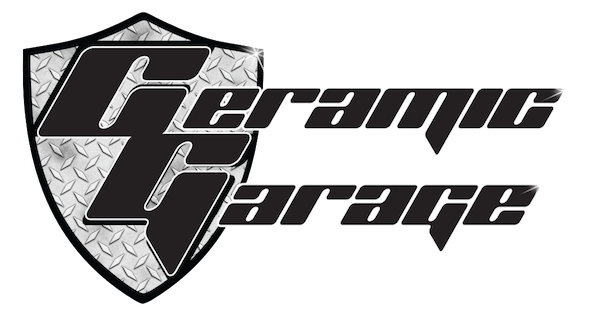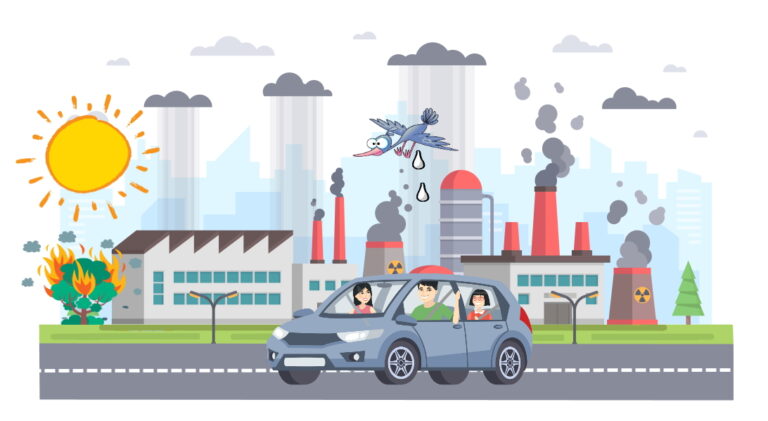A friend invites you over to his house for a barbeque.
You arrive and have to park your car outside his neighbors with the lush green lawn.
The party ends late, and you drive home in the dark.
The following day the sun is shining, and then you see them.
Nasty white spots on the side of your car.
You run inside and grab a microfiber towel, but the marks won’t come off.
They are there glaring at you.
Last weekend, you waxed your car, so why do you have water spots?
What Does Acid Rain Damage Look Like on a Car?
How Does Acid Rain Impact a Vehicle?
Damage happens when the acid material is left behind on a car’s surface after the water evaporates. According to the EPA, the acidic compound combined with other elements such as sunlight can be strong enough to eat away at the paint.
I know I was also shocked!
Vehicles with a clear coat are more vulnerable to the damage acid rain causes. That includes cars from the early 1990s.
Think of your clear coat as the car’s first line of defense against body rot that might otherwise require extensive repairs. A hazy, dull finish on a vehicle often signals apparent coat oxidation.
According to research conducted by the EPA, there will be “irregularly shaped, permanently etched areas” on a car’s surface if it has been impacted by acid rain.
How To Prevent Water Spot Damage
So, the best way to prevent water spots from happening is to make sure your vehicle is professionally washed to keep your car clean and protected. This will help to avoid acid damage rain can create.
Most importantly, make sure your vehicle is hand dried.
Also, completely cover your vehicle with a car cover or park your vehicle in a garage when precipitation is in the forecast.
That means if you accidentally park next to an irrigation system and the sprinklers have bathed your car, immediately dry your paint with a microfiber towel before the water has a chance to dry.
What Is Distilled Water?
Distilled water is steam from boiling water cooled and returned to its liquid state. Some people claim distilled water is the purest water you can drink.
All water- whether from a natural spring, artesian well, or regular tap- may have trace but safe amounts of minerals, bacteria, pesticides, and other contaminants.
Distilling rids water of all those impurities. It also removes more than 99.9% of the minerals dissolved in water.
Apply the vinegar/water solution with a spray bottle onto the affected area. Soak a microfiber towel with the 50/50 mix and gently rub on the affected area. The vinegar should break down the minerals in the water spots and make them easier to remove. Ensure you wash the area and dry thoroughly to remove the vinegar from the paint.
If the vinegar combination doesn’t remove all the water spots, try using an MDR.
An MDR is a mineral deposit remover, such as Stop Off from your favorite car care brand.
These products usually contain phosphoric acid, more robust than vinegar with pH levels lower than 3. MDR products are more powerful against calcium carbonate and other minerals.
Safety Warning: Dealing with stronger chemicals, we always recommend wearing gloves and safety glasses. Rinse hands thoroughly when done.
Put some on your microfiber towel or applicator and rub it onto the body panel for 30-60 seconds. Then, wipe it away with a clean towel and check the results. If the water stains are gone, rinse the panel thoroughly with water to remove all the excess acid.
If faint white water spots remain, try using a clay bar.
Your Final Option is Compounding and Polishing
If hard water deposits have baked too hard into your paint, they could have left micro-cavities behind after using the above methods to remove them.
These dimples will collect water and contaminants every time the car gets wet, worsening the problem over time causing your paint to look dull.
The best way to remove these etchings is to polish the clear coat to flatten it out.
If the layer is too thin, you’re looking at an expensive sanding down of the affected area and respraying of the clear coat at a professional correction paint shop.
Want to learn more? Give us a call at 209-718-7000
Or contact us through our website.










